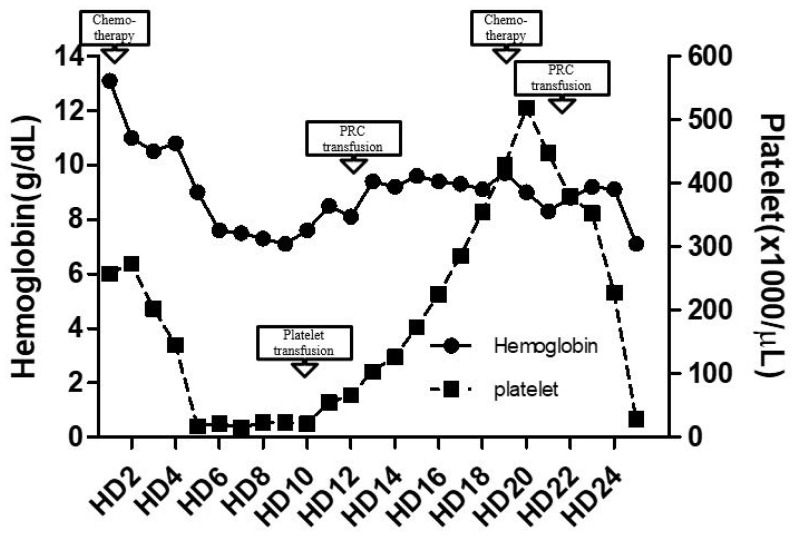Dear Sir,
Transfusion for patients with a rare blood group or phenotype, such as the D-- phenotype, are challenging for blood banks. Many countries have established programmes to continuously identify rare donors and set up registries to support patients in need of rare blood1. In line with this, since 2013, the Korean Red Cross Blood Services (KRCBS) has conducted serologic testing for the C, c, E, and e antigens and registered donors identified as D-- phenotype in the Rare Blood Donor Registry2. Recently, the authors received D-- phenotype packed red blood cells (PRC) via the KRCBS Rare Blood Donor Registry. Among six D-- phenotype donors contacted for blood donation, two were able to donate for a patient with the D-- phenotype.
The patient was diagnosed with a diffuse large B-cell lymphoma. He had type B blood group, RhD positive, and had a positive antibody screening test (ID-Diacell I–II; Bio-Rad, Cressier, Switzerland). A subsequent antibody identification test (ID-Dia Panel; Bio-Rad) identified anti-Ce. Rh subgroup typing was negative for CcEe antigen, confirming that the patient was of the D-- phenotype. Agglutination was not observed with autologous cells.
During chemotherapy, complete blood count results showed anaemia and thrombocytopenia. D-- type PRC and platelets were requested from the KRCBS for emergency transfusion. The patient received timely PRC and platelet transfusions. After subsequent therapy, the patient’s symptoms improved and he was discharged. Although D-- blood is very rare3, there was no delay in accessing compatible blood products, leading to discharge of the patient in good condition after chemotherapy without severe haemolysis4. Figure 1 shows transfusion of PRCs and platelets during chemotherapy. The haemoglobin level increased at different time points without transfusion, which may have been because the patient’s own haematopoietic function was maintained. Anti-Ce antibodies identified in the patient are thought to have been produced in response to exposure to antigens due to transfusion of red blood cells during prior surgery.
Figure 1. Summary of packed red blood cell and platelet transfusion of patient with D-- phenotype.
PRC: packed red blood cell; HD: hospital day.
Securing blood for patients with rare blood types can be achieved in different ways, including collecting autologous blood prior to surgery or transfusion, testing family members for the rare blood type, or maintaining a rare blood donor registry with or without a frozen blood bank5. Although establishing a donor registry for rare blood groups requires time and resources, this could help save lives. Here we report the first case of transfusion via the KRCBS Rare Blood Donor Registry for a patient with the D-- phenotype.
Footnotes
The Authors declare no conflicts of interest.
REFERENCES
- 1.Hustinx H. DGTI Register of Rare Donors. Transfus Med Hemother. 2014;41:338–41. doi: 10.1159/000366106. [DOI] [PMC free article] [PubMed] [Google Scholar]
- 2.Lee MK, Jung SY, Kim JU, et al. -D-/-D- phenotype frequency among korean donors. Korean J Blood Transfus. 2018;29:182–7. [Google Scholar]
- 3.Daniels G. Human blood groups. Malden, MA: Blackwell Science; 2002. [Google Scholar]
- 4.Han KS, Park KU, Song EY. Transfusion medicine. 4th ed. Seoul: Korea Medical Book Publisher; 2014. p. 212. [Google Scholar]
- 5.Lee MY, Park TS, Oh SH, et al. Two clinical cases of anti-Dib with Di(a+b−) phenotypes: practical need for Rare Blood Donor Registry Program in Korea. Lab Med Online. 2017;7:79–82. [Google Scholar]



